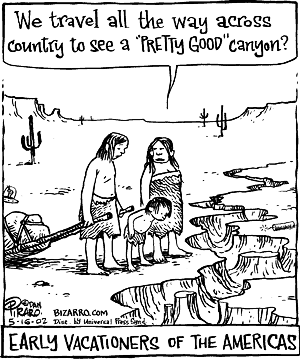 An oldie but a "goodie" in the annals of Native stereotyping:
An oldie but a "goodie" in the annals of Native stereotyping: An oldie but a "goodie" in the annals of Native stereotyping:
An oldie but a "goodie" in the annals of Native stereotyping:
Indians Seek a Role in Modern U.S.
by Andy Rooney
as printed in the Sacramento, Ca. Union
March 11, 1992
Is there anything wrong with a team calling itself "The Redskins"?
I never thought much about it until a group of American Indians complained about the name "Atlanta Braves" during the World Series and demonstrated against the "Washington Redskins" at the Super Bowl game.
Going into the stadium in Minneapolis for the Super Bowl, I was asked by a reporter what I thought about the demonstration.
"I think it's silly," I said. "American Indians have more important problems than to worry about sports teams calling themselves by Indian nicknames."
Ever since, I've been getting angry letters from Indians and friends of the Indians, of whom there are a great many.
It's interesting that for all the problems they've had with white Americans, American Indians were never subjected to the same kind of racial bias that blacks were. They were never forced to sit in the back of the bus. In spite of the fact that they surrounded the wagon trains and shot flaming arrows into the stagecoach carrying the new schoolmarm, Indians were always considered to be brave, strong, stoic, resourceful, true to their word and unconquerable. Anyone with a touch of Indian blood in their ancestry is proud of it.
There have been many efforts to assimilate the Indians into our society but, for the most part, Indians don't want any part of it. To some extent it's happening whether they want it or not. People who are part white and part Indian are having more children than people who are 100 percent Indian.
The real problem is, we took the country away from the Indians, they want it back and we're not going to give it to them. We feel guilty and we'll do what we can for them within reason, but they can't have their country back. Next question.
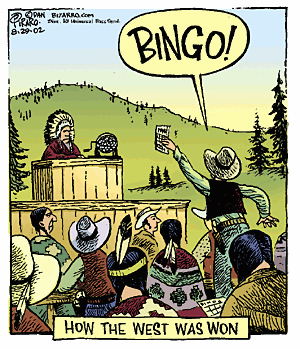
While American Indians have a grand past, the impact of their culture on the world has been slight. There are no great Indian novels, no poetry. There's no memorable Indian music. Their totem poles do not rank with the statuary of Greece and there's no Indian art, except for some good craft work in wool, pottery and silver. Their genius was for living free in a wild state...without damaging the ozone layer.
The best thing about Indians is their fierce independence and this virtue has made life tough for them. The colonists tried to make slaves of Indians but it didn't work.
The two million American Indians alive today are reluctant to concede that it's no longer practical to maintain a lifestyle that is an anachronism. The time for the way Indians lived is gone and it's doubly sad because they refuse to accept it.
They hang onto remnants of their religion and superstitions that may have been useful to savages 500 years ago but which are meaningless in 1992.
No one would force another religion on them but what if an Indian belief, involving ritualistic dances with strong sexual overtones, is demeaning to Indian women and degrading to Indian children?
Should they, on Indian land within the United States, be encouraged, with government money, to continue that? Should Indians be preserved on reservations like the redwoods and the American eagle, or should they join the mainstream?
Unemployment as high as 50 percent and alcoholism among Indians are more serious problems than whether a team uses an Indian name or symbol.
Illiteracy is widespread among Indians. Indians and whites blame whites for what's wrong and, historically, that may be true, but it is the Indians who are doing the drinking. The phenomenon of Indian alcohol addiction has existed since the 1600s.
If Indians are truly offended by these names and symbols we use for fun, we'll drop them, but someone should tell the Indians living on reservations that the United States isn't a bad country to be part of.
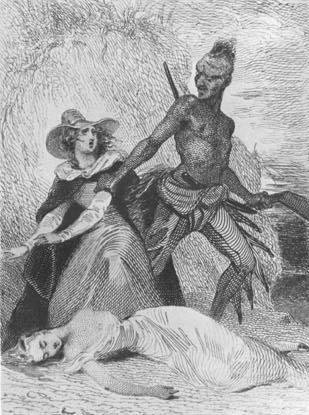
A Native responds
The Native Truth
A column dedicated to historical truth and human rights activism of the American Indian
Editor/Historian/Activist/Author: Terri Jean
Director of the Red Roots Educational Project
Contact: the_native_truth@yahoo.com
Established year 2000
"A lie would have no sense unless the truth were felt dangerous."
Alfred Adler
Native American stereotypes are grossly abundant. Some are slight and almost subliminal, while others boldly slap you in the face with their dangerous cultural assumptions and bordering-on-fictitious ideologies regarding Native people, history and even their spirituality.
Take the March 11, 1992 commentary by Andy Rooney entitled "Indians Seek A Role in Modern US." He opened with his contrary opinion of the Native community protesting the usage of racist images and mascots at sporting events. "I think it's silly." he wrote, "American Indians have more important problems than to worry about sports teams calling themselves by Indian nicknames." Following this callous statement, he also made the following assertions:
1. "American Indians were never subjected to the same kind of racial bias of blacks."
2. "In spite of the fact that they surrounded the wagon trains and shot flaming arrows into the stagecoach carrying the new schoolmarm, Indians were always considered to be brave, strong, stoic, resourceful, true to their word and unconquerable."
3. "While American Indians have a grand past, the impact of their culture on the world has been slight. There are no great Indian novels, no poetry... and there's no Indian art."
4. "The time for the way Indians lived is gone and it's doubly sad because they refuse to accept it. They hang onto remnants of their religion and superstitions that may have been useful to savages 500 years ago but which are meaningless in 1992."
5. "No one would force another religion on them."
6. "Should Indians be preserved on reservations like the redwoods and the American eagle, or should they join the mainstream?"
7. "The phenomenon of Indian alcohol addiction has existed since the 1600s."
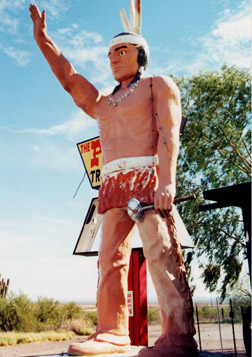
In this criticism by a well-known commentator whose words reached millions, how many stereotypes were delivered to a national audience? Before we dissect his comments, let's first define a stereotype:
Webster's New World Dictionary defines a stereotype as "a fixed or conventional notion or conception." This seems a bit obtuse, so let me redefine a stereotype according to multicultural education and learning:
* A stereotype has the following elements: The origin of the stereotype stems from a concept in which one individual or group believes they are superior over another due to their physical, spiritual, mental, cultural or personal attributes.
* The attribute is exaggerated, misconstrued, generalized and/or negative.
* The premise for such characterization is a "we" against "them" attitude.
The stereotypes stem from assumptions of another race, when one group refuses to find the truth of another and relies on false information, forming their own opinions
The stereotype leads to the mistreatment of a person.
Common stereotypes for Native Americans include:
* All Indians are spiritual environmentalists.
* Indian men are braves, women are squaws, children are papooses and leaders are chiefs.
* All tribes wore feathered headdresses, lived in teepees and were great horsemen.
* Most Indians are poor alcoholics who can't finish school, read or keep a job.
* Indians are pagan believers who worship superstitious notions and have no real religion.
* Indians speak broken language, have no sense of humor, and are passive.
* All Indians look alike.
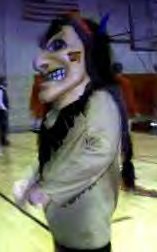

* Real Indians no longer exist.
* Indians were barbaric, child-stealing villains.
* Native people interfered with the growth of a nation.
* White civilization did what was best for the Native people. It civilized them.
* If it were not for the European discovery, Native people would still be half-naked, wandering the Plains yet today.
Examples of Native American stereotypes and what they manifest:
* A Cleveland Indian poster hangs in a teachers classroom .
* A child who knows the truth about Thanksgiving watches Pilgrims and Indians act out the "First Thanksgiving" during a school play.
* Prison inmates are mocked and prohibited from conducting their spiritual ceremonies.
* Local children's groups are playing cowboys and Indians in a regional play.
* A festival includes an "authentic" tribal dance -- though it is not Indian, and not authentic.
* An Indian bone is attempted to be sold on the Internet.
* The school mascot is a non-Native dressed as a stereotypical Indian.
* Commercials for Squaw Mountain or Eskimo Pies are on television.
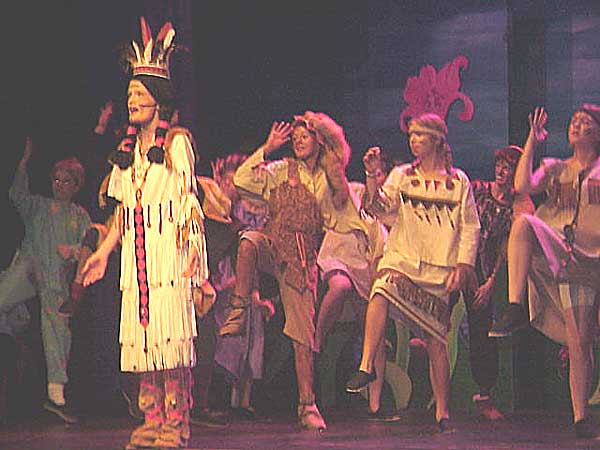
* A burial mound is bulldozed.
* A person with an Indian heritage cannot attend a minority conference because they do not have a federal identification number.
* Late night talk show hosts crack jokes about mascot protesting.
* Non-Native people advertise sweat lodges and Indian tarot cards -- for a hefty price.
* Indian dolls are sold in craft stores and malls -- complete with "authentic" outfit.
* A department store sells a Crazy Horse clothing line though his relatives protest and deem the usage of his name as offensive.
* Native "art" (painted by non-Native artists) sold at tourist shops.
<�����������>
Recently, a KARN radio DJ from Little Rock, Arkansas engaged in a dialogue with others in which the topic was rude people. This DJ, voicing his opinion regarding children and parents in public said, "...if they didn't act like little Indians there would be no problem!" When Native people complained, he told them that is was no big deal. (How rude! and ironic...) And when AIM protesters and their supporters at the March pre-season exhibition games challenged the justification in using Native imagery -- especially chief Wahoo of the Cleveland Indians -- Native people were told to "get a job", "go back to where you came from" and were actually shoved and spit upon.
What causes a society to believe that these acts are appropriate? Why doesn't a person automatically KNOW that mocking Native people is culturally offensive? An individual who would never use the *n-word* to a black person and would think it is brutally offensive to support a football team called the Nevada Negros sees nothing wrong with the Cleveland Indians, or with the many Indian mascots used today by various sporting teams. Why is that?
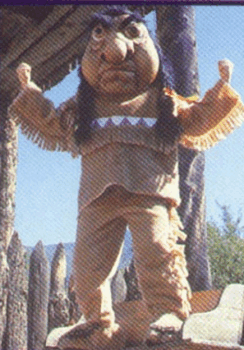
Many people today, especially children, maintain a one-dimensional image of a Native person. Just as many cartoon, literature and movie characters lock Indian figures into 19th century clothing and imagery, children often draw upon such images when asked to describe a Native American living today. War bonnets, feathered braids, loincloths, and tipis are characteristics generally associated with indigenous people. This stereotypical image continues its promotion via Disney movies (such as Pocahontas), team mascots (Atlanta Braves, the Washington Redskins, etc.), popular literature (Indian in the Cupboard), and the many products produced for profit by large companies that market fanciful images of Native Americans. This type of misrepresentation of an entire culture dehumanizes and exploits the group as a whole, fictionalizing a race, and propelling prejudice from one person to the next.
In response to Mr. Rooney's irresponsible comments, I have the following reply:
1. American Indians were subjected to the same biases as blacks. Segregation, violence, removal from homes, slavery, unjust laws, and a denial of human privileges were experienced by both minority groups.
2. Images of innocent settlers surrounded by vicious Indians are extreme stereotypes that Mr. Rooney must still believe in. Anyone who studies history of the "Wild West" knows such images are completely misconstrued.
3. Indian art by prominent artists such as T.C. Cannon, Richard Glazer, Peter Jemison, Norval Morrisseau, Leonard Peltier are highly valued. As for novels, M. Scott Momaday won the Pulitzer in 1969.
4. Traditions and ancient religions of the Native people are strongly held onto today -- and rightly so.
5. Native people were forced to convert to white religions time and time again. For example, children taken from their parents and placed in boarding school would be physically punished for attempting to practice their own religion. Complete freedom of religion was not granted to the Native people until 1978.
6. Native people are this nations indigenous people -- the lands original explorers, settlers, landowners and discovers. Not only should their culture be preserved, it should be revered.
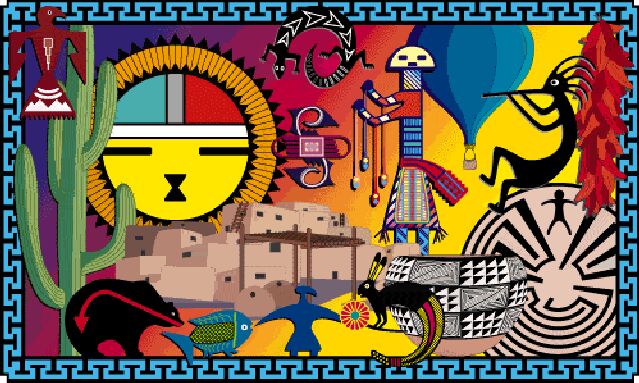
7. Alcohol was introduced to Native people. Not all American Indians are alcoholics. This is a common stereotype.
Stereotyping of Native culture and people continues to evolve and change as society changes. As long as Native history is misreported or omitted from history books, the cycle of stereotyping will continue. Turning a blind, or unconcerning, eye to such stereotypes allows society to perpetrate prejudice to the Native community.
Past stereotypes promote current ones. If the racist actions of today are allowed to continue, what will it lead to tomorrow?
Terri Jean is the author of the daily inspirational, 365 Days of Walking the Red Road (Adams Media Corp, to be released June 2003). She is the director of the Red Roots Educational Project. To learn more about Terri Jean or the Red Roots Educational Project visit http://www.terrijean.com. You can reach her at terrijean@bright.net.
Want to read back issues of the Native Truth? They can be found at: http://groups.yahoo.com/group/native_truth/messages.
Rob's comment
This rebuttal understates how ignorant Rooney's column was.
Typical of his shallow thinking, Rooney writes, "Unemployment as high as 50 percent and alcoholism among Indians are more serious problems than whether a team uses an Indian name or symbol." Where does Rooney think the unemployment and alcoholism came from? Could it possibly be because the US government took the Indians' land and broke the treaties that were supposed to give them the means to survive?
Why did the US break the treaties it signed? Could it possibly be because people thought Indians were savage and uncivilized? And why does it continue not to live up to its legal obligations? Could it possibly be because people still think Indians aren't quite normal and decent and don't deserve the same as Euro-Americans?

And where do people get their stereotypical views of Indians? Could it possibly be from the surrounding culture, including Western movies, comic books, and columns like Rooney's? If anyone has a better explanation, I've yet to hear it.
Let's recap: Stereotypes => broken treaties and unfulfilled obligations => unemployment and alcoholism. So Rooney has it wrong. He's failed to see the connections.
By challenging stereotypes, activists are dealing with the most serious problem facing Indians. Mainstream society will never treat Indians right, give them their due, until they believe Indians are ordinary people. And that won't happen until we eliminate the idea that Indians are "them" and not us.
This isn't just my opinion. See The Harm of Native Stereotyping: Facts and Evidence for others who think stereotyping is the worst Native problem.
Indian impact = "slight"?
Consider also Rooney's claim that "the impact of their culture on the world has been slight." Jack Weatherford wrote a whole book, Indian Givers, documenting the Native contributions to the world. Among them were many of the world's foodstuffs and the philosophies of natural rights and freedom.
Books by authors such as Sherman Alexie and Louise Erdrich routinely get reviewed in the major newspapers. These include books of poetry. Indian music is such a big category that the Grammy organization has given it its own category. Indian arts are proliferating in myriad ways.
Who says a Greek statue is a better work of art than a Kwakiutl totem pole, anyway? The claim is subjective and unprovable. Moreover, the classic period of Greek culture lasted only a few centuries, while Native cultures have existed for millennia. Let's compare the totem pole to a Greek statue carved in 1000 BC or AD 1000.
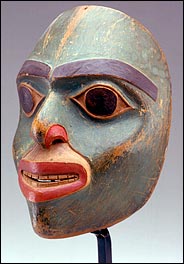
Moreover, who says sculpting is an art while pottery and jewelry making are "crafts"? Let's see which culture has achieved more in the art of beadwork or weaving or basketmaking. Not to mention such arts as dancing and storytelling. Some ceremonial reenactments of legends go on for days. How is that less of an art than a play, a music video, or a soap opera?
Speaking of dancing, Rooney writes, "[W]hat if an Indian belief, involving ritualistic dances with strong sexual overtones, is demeaning to Indian women and degrading to Indian children?" What if, indeed? I've never heard of such dances and have no idea what he's talking about.
What if someone saw "Indians" doing some orgiastic dance in an old movie or textbook, believed it was an authentic part of Native culture, and told it to millions of his readers? He'd look pretty stupid, wouldn't he? Well, guess which of these "what ifs" is true.
"Living free" = small potatoes?
"Their genius was for living free in a wild state," writes Rooney. Let's consider both parts of this statement:
"Wild state"? How are civilizations that lasted hundreds of years, built great structures, and left art and writing equivalent to a "wild state"?
"Living free"? For the most part, that's true, although the great civilizations were much less free than individual bands of Indians.
So living free was the Indians' greatest accomplishment? Could be, which may explain why the American colonists envied them and dressed up like them to symbolize freedom. We've erected statues of Indians and even put Indians on coins to symbolize freedom.
Rooney admits Indians gave Americans the concept of living free. If that were their sole accomplishment, which it isn't, it would be a monumental one. Thanks, Rooney, for inadvertently proving your own argument wrong.
Related links
The essential facts about Indians today
Tipis, feather bonnets, and other Native American stereotypes
|
. . . |

|
All material © copyright its original owners, except where noted.
Original text and pictures © copyright 2007 by Robert Schmidt.
Copyrighted material is posted under the Fair Use provision of the Copyright Act,
which allows copying for nonprofit educational uses including criticism and commentary.
Comments sent to the publisher become the property of Blue Corn Comics
and may be used in other postings without permission.